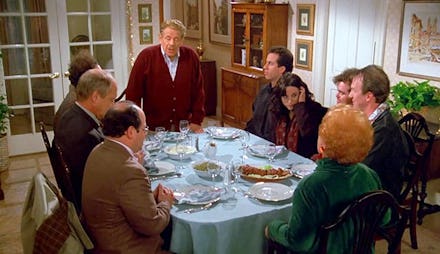What is Festivus? 5 things to know about the 'Seinfeld' holiday

Seinfeld fans may recall yet another holiday to add to the list this time of year: Festivus. The sitcom invented the holiday in its episode, "The Strike," which aired on Dec. 18, 1997 and was the 10th episode of the show's final season. Here are seven things to know about this make-believe holiday:
1. George's father invented it
Frank Costanza created the holiday as a non-commercial alternative to Christmas, Hanukkah and other winter holidays whose modern interpretations seem more focused on buying and exchanging gifts than most anything else. In "The Strike," Costanza says, "Many Christmases ago, I went to buy a doll for my son. I reach for the last one they had — but so did another man. As I rained blows upon him, I realized there had to be another way!" That way was Festivus.
2. Festivus dinner isn't ... festive
When you gather round the dinner table with your family on Festivus, you don't count your blessings. No, instead, Frank explains you must tell your family all of the ways they have disappointed you in the past year. So go ahead and gripe!
3. You put up a pole, not a tree.
In "The Strike," Frank describes the Festivus centerpiece (aka Christmas tree alternative) as an aluminum pole. He says it "requires no decoration" because he finds "tinsel distracting."
4. There's a chance to prove your strength
The Feats of Strength is one of the main events to look forward to during Festivus. According to this tradition, the head of the household challenges one family member or friend to a wrestling match. Festivus officially ends once the head of the household has been defeated. (George was not a huge fan.)
5. Oh, there's no God involved
Festivus has nothing to do with God, let alone the birth of Baby Jesus or anything else pertaining to a deity. It's for everybody, regardless of religion, or no religion.
You can watch the Seinfeld Festivus episode online for free on Crackle here.